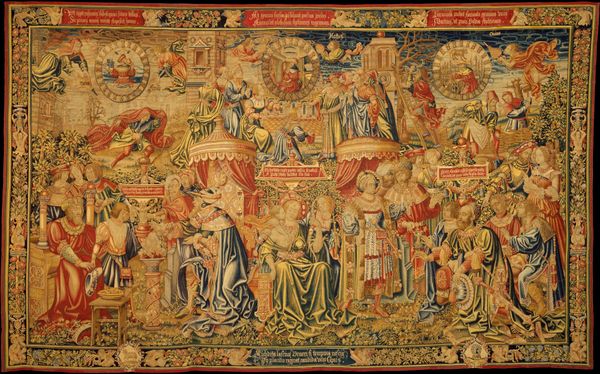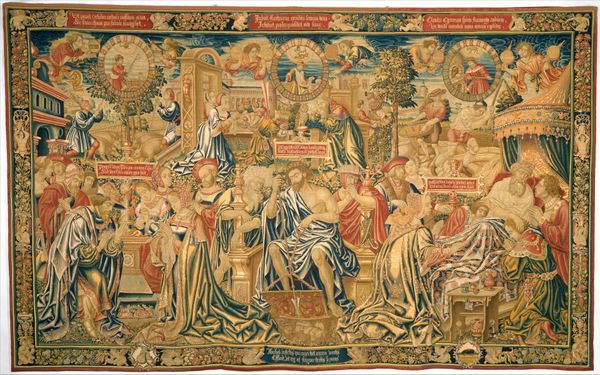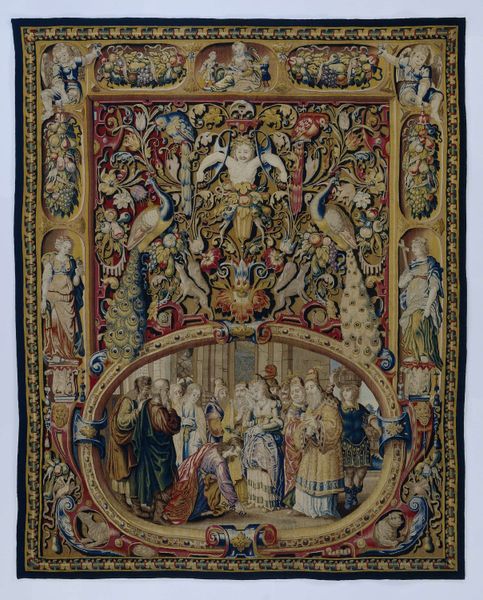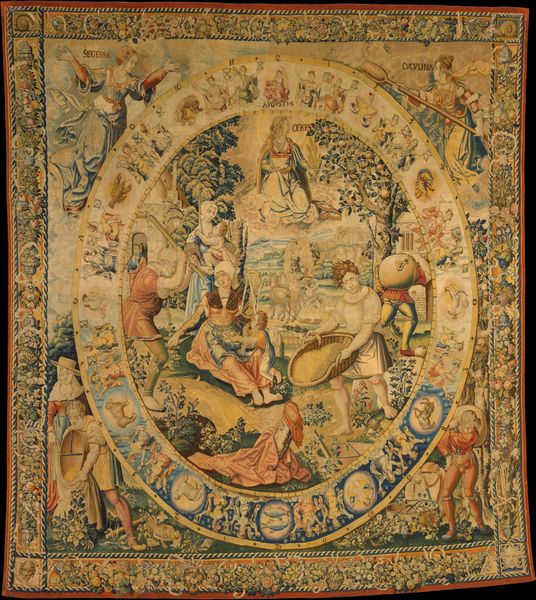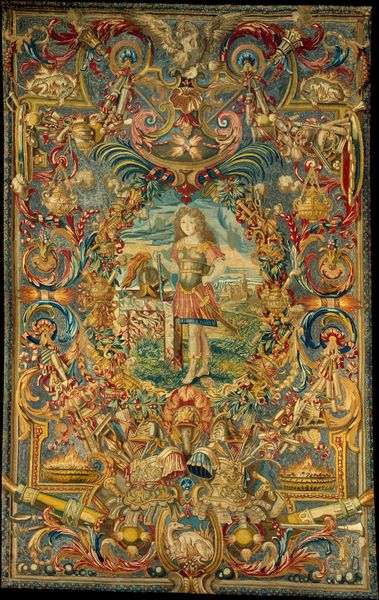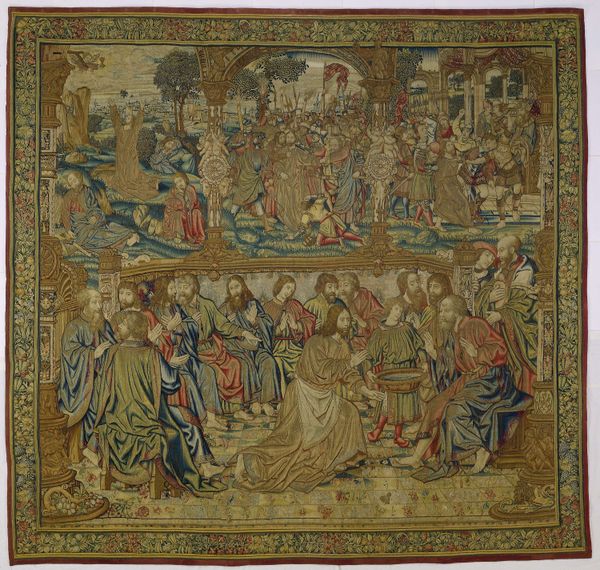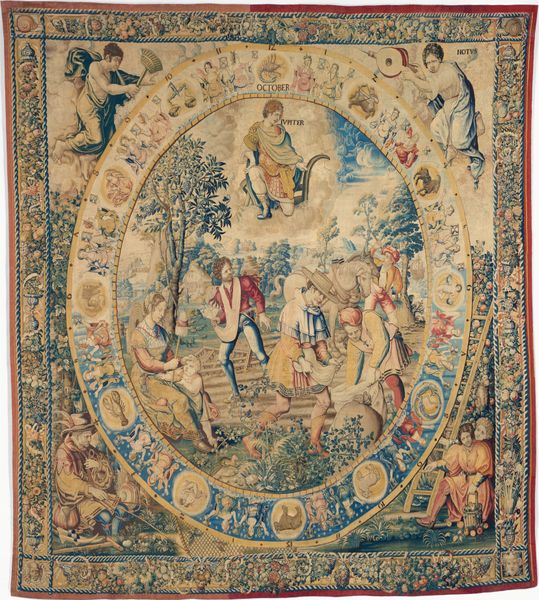
The Twelve Ages of a Man: The Second Three Ages (18-36), or Summer 1510 - 1520
0:00
0:00
textile, mural
#
allegory
#
narrative-art
#
textile
#
figuration
#
11_renaissance
#
northern-renaissance
#
decorative-art
#
mural
Dimensions: H. 174 1/2 x W. 289 inches (443.2 x 734.1 cm)
Copyright: Public Domain
Editor: Here we have Bernard van Orley's tapestry, "The Twelve Ages of a Man: The Second Three Ages (18-36), or Summer," created sometime between 1510 and 1520. It's incredibly detailed, a real feast for the eyes. The density of figures is overwhelming, in a captivating way. How do you unpack something with so much going on? Curator: It is a dense image! I'm drawn to the way this tapestry weaves together personal and social narratives, particularly considering its historical context. Have you noticed how the figures are arranged hierarchically? Consider the central figures, elevated and richly dressed. What might their placement suggest about societal structures of the time? Editor: I see what you mean. They definitely command attention and seem to represent authority. Is the tapestry reinforcing the established order, or is it perhaps offering a subtle critique? Curator: That's the crucial question. While it presents an image of order, the very act of depicting these ages allows for reflection on the cyclical nature of life and power. The abundance and vitality of summer are on full display, yet we also understand that this is a fleeting moment. How might that have resonated with viewers living in a society marked by strict social hierarchies and, perhaps, a growing sense of unease? Editor: That’s a really interesting way to consider it – the contrast between abundance and ephemerality in a rigid social structure. It makes the piece feel less like a simple celebration of the status quo. Curator: Precisely. And remember, textiles were often used to decorate domestic interiors, serving not just as decoration but as constant reminders of moral and social codes. So the question becomes, whose code is being represented, and for what purpose? Editor: I’ve never thought about tapestries as having such layered meanings! Now I’m seeing so much more than just pretty pictures. Curator: And that’s the power of art: to reflect, reinforce, and ultimately, allow us to question the world around us. This work invites us to consider not just the surface, but the complex interplay of power, identity, and social expectation woven into its very fabric.
Comments
No comments
Be the first to comment and join the conversation on the ultimate creative platform.
